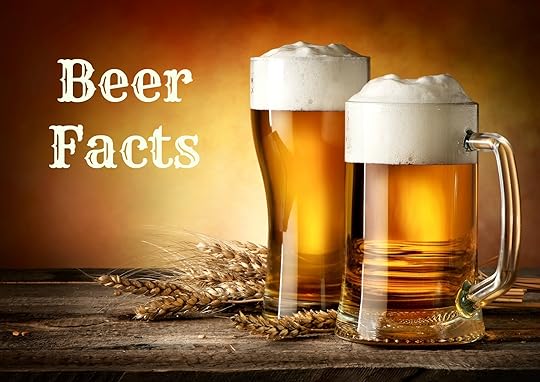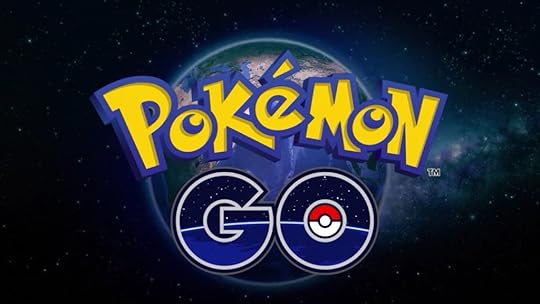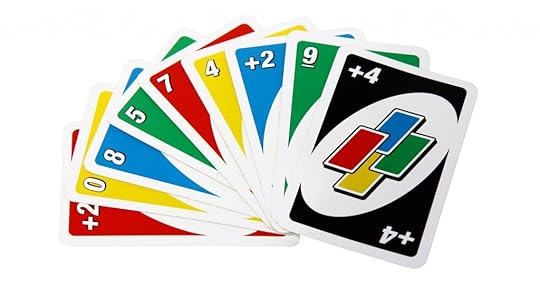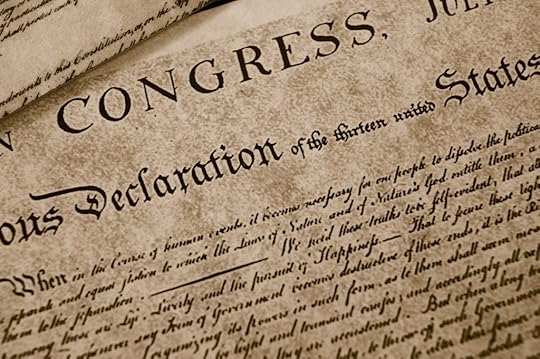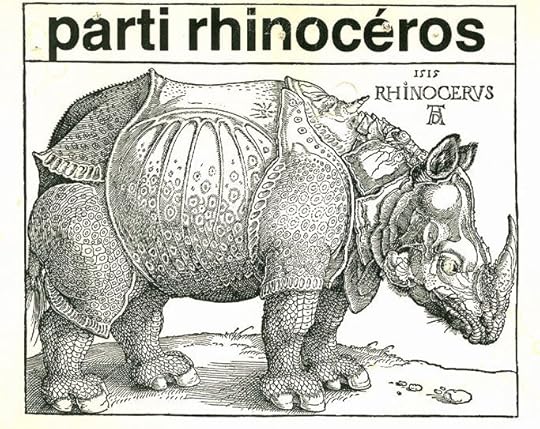Bathroom Readers' Institute's Blog, page 80
July 12, 2016
For What Ales You…
It’s not just for breakfast anymore! We’ve discovered that beer has many inventive and unlikely uses around the home and beyond. (Uncle John’s never had so much fun researching an article.)
(1)
Beer is slightly acidic, making it useful for cleaning copper pots. Throw a small amount of beer in the pot, let it sit for a few minutes, and then wipe it out.
(2)
Beer adds shine and luster to hair. Boil one cup of beer until it’s reduced down to 1⁄4 cup. Let it cool and mix with your regular shampoo.
(3)
After a beer shampoo, try a beer conditioner. Mix three tablespoons of beer with half a cup of warm water. After washing your hair, rub in the beer solution, leave it in for a couple minutes, then rinse. The beer reportedly makes flat hair bouncier.
(4)
Beer kills pesky garden slugs. Fill some wide-mouthed jars a third of the way full with beer. Bury them about 15–20 feet from your garden, with the rims level to the soil. Slugs love beer. They’ll smell it, try to drink it, then fall into the jars and drown.
(5)
A bath of ice-cold, extra-bubbly beer soothes tired feet.
(6)
If drinking too much beer got you lost, beer can also help you find your way back home. Put some in a bowl and let it go flat. Magnetize a needle by stroking it against a piece of silk, then put it in the bowl of beer and it will point north/south.
(7)
Spray organic beer on the brown patches in your lawn. The grass will absorb the fermented sugars, which stimulate growth.
(8)
Flat beer cleans wooden furniture. Wipe some on a soft cloth, clean the furniture, then wipe dry with another cloth.
(9)
Try this only at your own risk, but beer can shine gold. Pour the beer onto a cloth, rub it gently over the gold (but not any gemstones) and wipe clean with a towel.
(10)
Beer even removes coffee stains from rugs. Pour the beer directly over the stain, then rub it into the fibers. (Disclaimer: Try this one only at your own risk, too.)
The post For What Ales You… appeared first on Trivia Books and Facts | Uncle John's Bathroom Reader.
Good News: Helium Levels are Rising!
It seems like everyday there’s another story about how the environment is doomed and there’s little we can do to stop it. In 2010, we brought you one of those stories : There was a worldwide shortage of helium and the possibility of it running out before long. Well, in an unlikely turn of events, the helium shortage is over.
Helium is the second lightest element in the universe, but that doesn’t mean it’s a renewable resource. In fact, it’s not at all, and the world’s reserves of the gas were on the brink of running out less than a decade ago due to overuse. That means party balloons—as well as MRI machines and nuclear power—would be a thing of the past. Yes, the world was about to run out of the special kind of gas that made balloons float and medical imaging work.
Naturally, a lot of scientists and industrial organizations went hunting for helium, both low and high (like how your voice sounds when you inhale helium). And they found it. The Norwegian helium supplier Helium Ore, in cooperation with researchers from Oxford and Durham Universities found the most massive “gas field” outside of Uncle John’s house in Tanzania’s East African Rift Valley.
Here’s how it works: Helium is stored in rocks thousands of years old. It takes massive amounts of heat (not to mention some bits of pressure and time) to release that helium. Volcanic activity in the East African Rift Valley has evidently provided the ideal environment for the slow release of helium from ancient rocks buried deep in the earth. In turn, that helium has been trapped in shallow gas fields.
However, the helium can’t be collected quite yet. The scientists know it’s there but can’t get to it, because the stores are too close to an active volcano, which releases high amounts of carbon dioxide and other gases which highly dilute the helium. Researchers are confident they’ll find a way to access good helium shortly. How much helium is available? At least 54 billion cubic feet, more than twice the 24.2 billion cubic feet held by the United State Federal Helium Reserve, currently the world’s biggest supplier.
The post Good News: Helium Levels are Rising! appeared first on Trivia Books and Facts | Uncle John's Bathroom Reader.
July 11, 2016
5 Other Women Who Ran For President
Hillary Clinton has secured enough delegates to be the presumptive Democratic nominee for president. She’s the first woman to be a major party’s nominee, but she’s certainly not the first woman to make a run for the Oval Office.
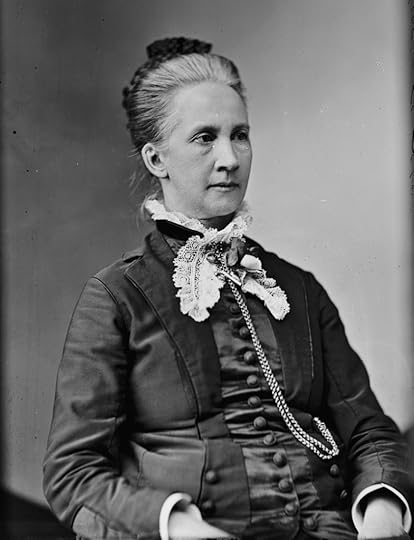 Belva Ann Lockwood
Belva Ann LockwoodA suffragist and one of the first licensed female lawyers in the U.S. Lockwood ran for president on the National Equal Rights Party ticket. The party’s main platform: equal rights, the same marriage and divorce laws state to state, and “universal peace.” The first woman to appear on a national ballot, Lockwood won just 4,000 votes nationwide. That means Lockwood ran for president…but couldn’t vote for president. (Women were finally granted the right to vote in 1920.)
Shirley Chisholm
The former teacher and New York state legislator made history in 1968 as the first African-American woman elected to the House of Representatives. She served until 1983, but in 1972 became the first woman to run for the Democratic nomination. Calling for a “bloodless revolution,” Chisholm did very well in Mississippi, New Jersey, and Louisiana, but ultimately came in seventh behind eventual nominee George McGovern.
Elvena Lloyd-Duffle
Generally when a president seeks a second term, other candidates from their party sit out the election in deference. Not so in 1996, when Bill Clinton faced opposition from Lloyd-Duffle. An accountant from Chicago with little political experience, she ran because she “sensed a call” to do so. She also had performed an audit on a large company and figured she could balance the federal budget. She told a reporter, “once the books have been reviewed, it can be done in three to four days.” Other plans: to enlist her estranged husband as her running mate, and give free college tuition to everyone. Nevertheless, Lloyd-Duffle won just 92,000 votes.
Carol Moseley Braun
In 1992, Braun was elected as a senator from Illinois, the first woman to defeat an incumbent male senator and the first African-American woman ever elected to the body. In 2003, Braun announced her candidacy for the Democratic nomination. After a third-place finish in the Washington, D.C. primary, she dropped out a few days before the Iowa caucuses.
Gracie Allen
In 1940, Gracie Allen, half of the popular comedy duo of Burns and Allen, announced on her radio show that she was running for president as the nominee for the Surprise Party. (In the tone her signature flighty persona, Allen said it was because her mother was a Democrat, her father was a Republican, and was born a “surprise.”) It was a joke candidacy of course, but Allen appeared on numerous radio shows in the summer of 1940 to explain her policies, such as alleviating the $43 billion national debt by putting it in a savings account “at two percent interest.” And unlike incumbent president Franklin Roosevelt, she promised so more fireside chats, at least not year-round: “Washington is awfully hot in the summer.” Despite a catchy campaign song (“Vote for Gracie”) and the actual endorsement of Harvard University, Allen didn’t win the election, but she did get a surprisingly robust 42,000 votes.
The post 5 Other Women Who Ran For President appeared first on Trivia Books and Facts | Uncle John's Bathroom Reader.
All the Things People Are Finding Instead of Pokémon in “Pokémon Go”
The new Pokémon video game reboot Pokémon Go has become a pop culture sensation. Utilizing the camera and GPS on an electronic device, players must go out into the real world and seek out cute little monsters that the game says are hidden in stores, streets, behind trees, etc. (They show up superimposed in the camera’s viewfinder.) The wild search has led players to a lot more than just virtual monsters.
A 19-year-old woman named Shayla Wiggins was playing the game in rural Wyoming. Having already caught more than 50 monsters after one day, she exhausted the parking lot and gas station near her house in Riverton and went searching for creatures the game calls “Water Pokémon” along the Big Wind River, which runs behind her house. She kept following the river, eventually walking beneath a bridge. When Wiggins finally looked up from her phone, she didn’t find a Water Pokémon, but she did find a dead body. Police do not suspect foul play, and believe the man accidentally drowned.
The game allows players to place a “beacon” at a spot in an area where they’ve discovered lots of Pokémon, allowing other players to reap the rewards. That was reportedly the first part of the plan for four men who were arrested at a shopping center in O’Fallon, Missouri. Parked in a black BMW, they allegedly robbed at gunpoint 11 different teenagers who sought out beacons that they had artificially placed in the game.
The Pokémon that players catch can show up virtually anytime, anywhere. For a man named Jonathan Theriot, a birdlike creature called a Pidgey appeared when he was killing time on his phone while at a hospital…while his wife was in labor on the bed next to where he sat. He shared on the website Imgur a self-deprecating picture of himself going ahead and capturing that Pidgey with the caption, “When your wife is about to have a baby and a Pokémon shows you have to low-key catch it.” The photo went viral, and it’s been viewed more than 1.7 million times.
The post All the Things People Are Finding Instead of Pokémon in “Pokémon Go” appeared first on Trivia Books and Facts | Uncle John's Bathroom Reader.
July 8, 2016
The Game of UNO
Have you ever played the game of Uno? It’s consistently been one of America’s best-selling toys. Here’s where it came from.
Invented by:
Merle Roberts, a barber from Cincinnati, Ohio
Origin:
In the 1960s, Roberts created a simplified version of the card game Crazy Eights, and sold it out of the trunk of his car and at Kiwanis conventions. That might well have been all there is to write about it…if a neighbor hadn’t played the game with an acquaintance named Bill Apple. Apple, in turn, showed the game to his brothers-in-law Bob Tezak and Ed Ackeman on Thanksgiving Day in 1971. “It was miserable weather that weekend so we just played game after game,” Tezak recalls. He and Ackeman enjoyed it so much that they talked Apple into buying it. “We paid Roberts in the neighborhood of $100,000 for all rights to the game, which in 1972 was a considerable amount of money,” Tezak says. “I got a lot of strange looks, but I did it. At the time I didn’t know any better.”
Selling it:
Tezak was a florist and funeral home director. The trio set up shop in the back room of his family’s funeral parlor while Ackeman took a two years’ leave of absence from his job as a bank teller to develop and sell Uno. In their first year of business, they sold 5,000 games and made $54 in profits—which they split three ways. Their big break came in 1977 when Tezak made a sales presentation at the Wal-Mart headquarters in Bentonville, Arkansas. “I can see this guy isn’t about to place an order,” Tezak remembers, “but I’m still making my pitch when Wal-Mart’s founder Sam Walton walks in and says, ‘How ya’ doin’, son?’ So I told him about Uno. When I got done, he was quiet for awhile. Then he said, ‘Buy a couple gross from the boy.’ That made us. What Wal- Mart buys, everybody buys.” Since then, Uno has sold more than 100 million decks, making it the number-one card game in the world (after playing cards).
The post The Game of UNO appeared first on Trivia Books and Facts | Uncle John's Bathroom Reader.
July 7, 2016
Origins of Award Names
Many of the top honors in the arts, sports, and the sciences are named after people. Here are the stories of the names behind the awards.
JOHN HEISMAN
Heisman coached football at Auburn, Clemson, and Georgia Tech in the 1890s and early 20th century. In the 1930s, he worked as athletic director at the Downtown Athletic Club in New York City. Since 1935, the club has issued the Heisman Trophy— for the year’s best college football player (voted on by sports reporters)—in his honor. Past winners include Reggie Bush, Barry Sanders, Tony Dorsett, Roger Staubach, and O. J. Simpson.
ANTOINETTE PERRY
Perry was a stage actress and director in the early 20th century. She also founded the American Theatre Wing in the 1940s, which, among other theatrical-promoting activities, hands out the Antoinette Perry, or “Tony,” Awards honoring the best Broadway plays, musicals, and performances of each year. All-time Tony leader: Actress Julie Harris was nominated 10 times and won 5.
JOHN NEWBERY
John Newbery was an 18th-century publisher who specialized in children’s books, and is believed to be the first publisher ever to do so. Since 1922, the American Library Association has annually presented the Newbery Award to the author of the best new children’s novel. Some Newbery winners: Hugh Lofting (for The Voyages of Doctor Dolittle), Esther Forbes (Johnny Tremain), and Katherine Paterson (Bridge to Terabithia).
RANDOLPH CALDECOTT
Caldecott was an illustrator in 19th-century England. He drew the pictures for books including The Babes in the Wood and The House that Jack Built. Like the Newbery Award, the Caldecott Medal is a prize for children’s literature presented by the American Library Association, but this one awards only the illustrators. Caldecott- winning titles include The Snowy Day (Ezra Jack Keats), The Polar Express (Chris Van Allsburg), and Where the Wild Things Are (Maurice Sendak).
GEORGE FOSTER PEABODY
Peabody was a businessman who switched to public service in 1906 at age 54, working for various universities as well as the Democratic National Committee. After Peabody died in 1938, the University of Georgia, where he’d served on the board, established the Peabody Award. Officially presented by the college’s journalism school, the award honors excellent radio and TV
reporting and socially redeeming programming. Winners in 2006 included 60 Minutes, American Masters, The Office, and Scrubs.
IRVING G. THALBERG
Thalberg was head of the Production Division at MGM Studios in the 1920s and 1930s. He sought to make film more respectable— not just profitable. He was the man behind Mutiny on the Bounty (1935) and the Marx Brothers’ A Night at the Opera (1935), but he never allowed his name to be credited in the films he produced. He died of pneumonia in 1936 at age 37. Since 1938, the Academy of Motion Picture Arts and Sciences has presented the Irving G. Thalberg Memorial Award. It’s a lifetime achievement award presented at the Oscars to a well-established director or producer. Past winners include Alfred Hitchcock, Steven Spielberg, and Billy Wilder.
WILL EISNER
Eisner was a writer and illustrator who pioneered the long-form comic, or “graphic novel,” with his 1940s comic series The Spirit. Eisner Awards, established in 1988 in his honor, are given out each year to artists, writers, and publishers for excellence in comic books. Categories include Best Short Story, Best Writer, Best Cover Artist, Best Colorist, and more than 20 others. Past winners include Stan Lee for The Silver Surfer: Parable; Bill Watterson’s Calvin and Hobbes; and Frank Miller for Sin City.
JOHN D. AND CATHERINE T. MACARTHUR
MacArthur made millions as the owner of several insurance com- panies in the 1930s and 1940s. His wife, Catherine, held board positions at many of her husband’s firms. When John MacArthur died in 1978, most of his fortune was used to start the John D. and Catherine T. MacArthur Foundation (Catherine died three years later). The major work of the charity is the awarding of the MacArthur Fellowship, or “genius grant.” Between 20 and 40 Americans each year—nominated by a small selection committee —receive $500,000 dispensed over five years as an “investment in a person’s originality, insight, and potential.” Among the more than 700 “geniuses” are historians, writers, scientists, artists, musicians, and inventors. Some well-known MacArthur fellows: writer Thomas Pynchon, paleontologist Stephen Jay Gould, and critic Henry Louis Gates.
JOHN CHARLES FIELDS
Canadian mathematician John Charles Fields died in 1932 and stipulated in his will that a prize be awarded every four years to two, three, or four groundbreaking mathematicians who are under the age of 40. Presented by the International Mathematical Union, the Fields Medal is the highest honor in math. Andrei Okounkov won a Fields Medal in 2006 for “his contributions to bridging probability, representation theory, and algebraic geometry.” (Don’t worry—we don’t know what that means, either.)
The post appeared first on Trivia Books and Facts | Uncle John's Bathroom Reader.
July 5, 2016
Happy Birthday, America’s Birthday!
Yesterday marked the 40th anniversary of the Bicentennial, the yearlong 1976 celebration marking 200 years of the United States (officially the anniversary of the Declaration of Independence.) The festivities culminated in the splashiest Fourth of July in history. Here’s a look back on how America looked back.
Congress began planning the Bicentennial 10 years earlier, passing a resolution in July 1966 to create Expo ’76, a celebration of America’s birth to be held solely in the Revolutionary War-significant cities of Philadelphia or Boston. In 1973, the Expo ’76 plans were cancelled and replaced with a committee that would oversee hundreds of events in cities and towns across the country.
The Bicentennial officially kicked off on April 1, 1975. The American Freedom Train departed Delaware for a 21-month tour of all 48 contiguous states. The train’s 10 cars contained relics of American history, such as the actual Louisiana Purchase document, Jesse Owens’ Olympic medals, George Washington’s personal copy of the Constitution, and a moon rock.
No hard feelings: Queen Elizabeth II of the U.K. (from whom independence was declared in 1776) made an official state visit to the U.S. in July 1976. Traveling aboard a yacht, the Queen visited Washington, D.C., New York, and Philadelphia…where she presented a replica of the cracked Liberty Bell to the nation called the Bicentennial Bell.
England also loaned out one of the four extant copies of the Magna Carta to be displayed in the U.S. Capitol Building. One of the main inspirations for the U.S. Constitution, the document sat in a glass box adorned with gold, rubies, pearls, and diamonds.
Outside of the United States, the University of North Texas band performed live in Moscow. Arranged by the State Department, it was broadcast on national American television via satellite, one of the first major broadcasts to utilize the technology.
The luckiest man of the Bicentennial: Eric Leek of North Arlington, New Jersey. The 26-year-old cab driver won New Jersey’s Bicentennial Lottery. From 1976 to 1996, he received a prize of $1,776 every week (before taxes).
The Bicentennial was not without controversy. Invoking the Boston Tea Party of 1773, in which colonists dumped tea into Boston Harbor to protest the high taxes on tea (among other taxes), a group dumped empty packages bearing the names “Gulf Oil” and “Exxon” into Boston Harbor. They were protesting unchecked corporate power.
CBS ran these “Bicentennial Minutes” all year long:
The post Happy Birthday, America’s Birthday! appeared first on Trivia Books and Facts | Uncle John's Bathroom Reader.
July 1, 2016
Join the Rhinoceros Party!
July 1 is Canada Day, so here’s a look back on the humorous Canadian political “movement” known as the Rhinoceros Party.
In 1963, a Quebecois writer named Jacques Ferron founded a new political party intended to satirize Canadian politics from the inside. A real, registered party, Ferron’s Rhinoceros Party satirized other politicians by promising from the get-go that its only real promise was a “promise to keep none of their promises.” That meant that its candidates could make extremely bizarre promises to the electorate and then never have to actually deliver on them.
The name Rhinoceros Party was chosen as a nod to Cacareco, a rhinoceros who was elected to the city council of Sao Paolo, Brazil, in 1958 as a form of political protest. Ferron also cited inspiration from Cornelius the First, a rhino at Quebec’s Granby Zoo. Like Cornelius, Ferron said, rhinos are “slow-moving, dim-witted,” and “have horns growing out of the middle of their faces.”
The party ran candidates in parliamentary elections from the early ‘70s to the early ‘90s, but its profile peaked with elections in 1979 and 1980. To maximize media attention, the Rhinoceros Party fielded a candidate in the district represented by Prime Minister Pierre Trudeau.
The party promised in 1979 to replace the Canadian Lottery’s cash prize with spots in the Canadian Senate. It also promised to make Great Britain a Canadian province.
After the Communist Party of Canada spun off a rival faction called the Marxist-Leninists, the Rhinoceros Party also created a mock faction called the Marxist-Lennonists—referring to Groucho Marx and John Lennon (as opposed to Karl Marx and Vladimir Lenin.
Frequent Rhinoceros candidate Ted “not too” Sharp of Kingston, Ontario once promised to give fauna the same rights as flora. He also announced a plan to tow Antarctica up to Canada so the country could “control all of the world’s cold” and thus win the Cold War.
The Rhinoceros Party’s energy platform at one point: to construct one nuclear power plant for each and every Canadian household, and to also provide all Canadians with free lead-lined underwear.
In 1984, a candidate named Stardust the Magician promised to put a roof on Montreal’s Olympic Stadium. All he needed was a taxpayer-funded $25 million handkerchief.
The post Join the Rhinoceros Party! appeared first on Trivia Books and Facts | Uncle John's Bathroom Reader.
June 30, 2016
Random Bits on Elton John Hits
Here’s hoping these facts don’t burn out like a candle in the wind.
“Your Song”
John’s first album, Empty Sky (1969), flopped in both the U.S. and the U.K. Still, he got a gig as the opening act for Three Dog Night. One of the songs he performed on that tour was “Your Song,” which he planned to include on his next album. Only problem: So did Three Dog Night, who planned to release their version as a single. At the last moment, though, the band changed their minds. Why? They thought John did the song (which he co-wrote) better. It turned out to be John’s breakthrough hit, reaching #8 in the U.S., his first of 59 top 40 hits.
“Bennie and the Jets”
A surprise hit on R&B radio stations, this song earned John an invitation in May 1975 to perform as the lead act on Soul Train, only the second white artist ever to do so. (The first was David Bowie.)
“Candle in the Wind”
This song, first written to eulogize Marilyn Monroe, has been released as a single three times, each more successful than the last. The studio version from the album Goodbye Yellow Brick Road didn’t even make the charts when it came out in 1974, but a live version reached #6 in 1987. In 1997 John performed a new version at the funeral of Princess Diana with special lyrics by his longtime writing partner, Bernie Taupin. A recording of that song (John performed it only once) spent 14 weeks at #1 and became the bestselling single of all time. (Proceeds went to charity.)
“Rocket Man”
When this song was released in the Soviet Union, it was retitled “Cosmonaut.”
“Empty Garden (Hey Hey Johnny)”
It’s about Elton’s friend John Lennon, who was murdered in 1980. In an interview on Inside the Actors’ Studio, John said that he hardly ever plays the song live anymore because it makes him too sad. But he noted that he has performed it at Madison Square Garden in New York, where he dueted with Lennon in 1974 on the Beatles’ “Lucy in the Sky With Diamonds”—Lennon’s final concert appearance.
“Don’t Let the Sun Go Down on Me”
Elton John wanted an all-star chorus for the backing vocals. He managed to land Carl Wilson and Bruce Johnston of the Beach Boys, the Captain and Tennille, Dusty Springfield, and members of America. The mix sounded terrible, so all were jettisoned except Wilson, Johnston, and Tennille. (The horn section was provided by Tower of Power.)
“Goodbye Yellow Brick Road”
John has performed in all 50 states. The 50th: Vermont (2008), home of Ben & Jerry’s Ice Cream, which commemorated the event with a flavor called “Goodbye Yellow Brickle Road”—chocolate ice cream, peanut butter cookie dough, butter brickle, and white chocolate chips.
“Levon”
In 2010 John and his partner David Furnish became parents to a boy born on Christmas Day to a surrogate mother. They named him Zachary Jackson Levon Furnish-John. “Levon” is a John song, which includes the lyric, “He was born a pauper to a pawn on a Christmas day.” (The song, in turn, was named after Levon Helm of The Band, although the song isn’t about him.)
“Honky Cat”
The only hit song in history that features a duck call solo (performed by John’s drummer, Ray Cooper).
“Don’t Go Breaking My Heart”
Kiki Dee and John recorded this duet in 1976 as an homage to Motown greats Marvin Gaye and Tammi Terrell. It was John’s first #1 single in the U.K. Other stars with whom John recorded the song: Miss Piggy (on The Muppet Show), Minnie Mouse (on Totally Minnie), and RuPaul (on John’s Duets album).
“That’s What Friends Are For”
John sang on this 1985 hit single benefiting AIDS charities along with Dionne Warwick, Stevie Wonder, and Gladys Knight. He was the producers’ third choice for the slot, after George Michael and Rod Stewart both turned it down.
The post Random Bits on Elton John Hits appeared first on Trivia Books and Facts | Uncle John's Bathroom Reader.
June 29, 2016
The Olympics Will Not Be Held In…
Major cities around the world place bids years in advance to host the Summer Olympics games. Here’s a look at some major metropolises that went for the gold…and lost the race.
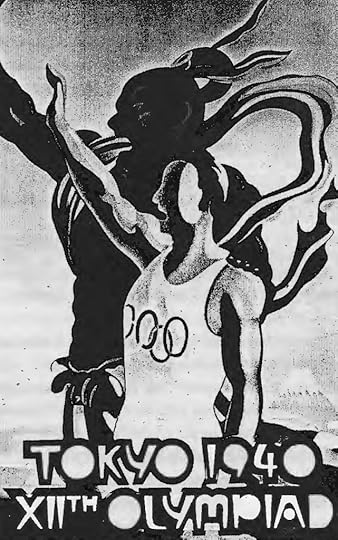 Tokyo, Helsinki
Tokyo, HelsinkiIn 1936, Tokyo was selected as the site of the 1940 Olympics, the first Asian city to host the Games. But in 1937, world leaders put pressure on the International Olympic Committee to pull out of Tokyo, after the Japanese invasion of Manchuria. Tokyo forfeited the games, and they were awarded to second-place bidder Helsinki, Finland. And then the 1940 Olympics were called off in the wake of World War II. (Helsinki wound up hosting in 1952.)
London
The English city had successfully bid on the 1944 Olympics, which were cancelled due to World War II. (London finally hosted the Games in 1948.)
Detroit
During its period in the mid-20th century as the center of American manufacturing and the auto industry, Detroit entered the bidding process in the early 1940s to host the 1944 Olympics. (London won, but World War II led to a cancellation of the Games.) Detroit bid again in 1948 (which London won, to make up for the cancelled 1944 Games). Another unsuccessful bid came for the 1952 Olympics. And then for the Summer Olympics held in 1956, 1960, 1964, 1968, and 1972. Detroit has still never hosted an Olympics.
Tehran
Shortly after the 1976 Summer Olympics were a financial disaster for Montreal, bids came due for the 1984 Summer Olympics. Terrified by the same economic fate that had befallen Montreal, only two cities put in bids: Los Angeles (which planned to use pre-existing venues as a way to save money)…and Tehran, the capital city of Iran, and where 52 Americans were held hostage from 1979 to 1981. Tehren ultimately pulled out before the selection process began, and Los Angeles got the Games.
Doha, Qatar
The city did very well in the bidding process but the IOC ultimately didn’t let the city continue with its bid after the committee announced its intent to hold the Games in October, far too late for the Summer Olympics. That delay hurt the bid, but it was necessary: Summer temperatures in Doha regularly reach 113°F.
The post The Olympics Will Not Be Held In… appeared first on Trivia Books and Facts | Uncle John's Bathroom Reader.

